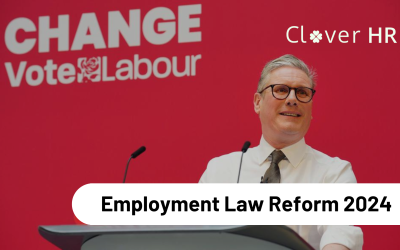Background:
Mrs Brazel, a music teacher employed by the Trust on a permanent contract. Working variable hours each week, in term time only.
Hours of work would fluctuate, based on demand for lessons from students. She was both a part-time and part-year worker with irregular hours, on a permanent zero hour’s contract.
She took holiday in three equal tranches at the end of each term. Originally the Trust calculated her holiday pay for each tranche based on her average weekly pay for the previous 12 weeks (ignoring those weeks where she did not receive pay), as required under the legislation.
In September 2011, the Trust changed the way it calculated Mrs Brazel’s holiday pay and adopted the 12.07% method. This produced a less favourable result for Mrs Brazel than before.
Mrs Brazel brought proceedings in the Employment Tribunal for unlawful deduction of wages, which decided against her. She appealed to the Employment Appeal Tribunal, where she was successful.
The Trust appealed this decision but was unsuccessful in the Court of Appeal. This then led to an appeal to the Supreme Court, who have ultimately rejected the Trust’s argument and have confirmed that part-year workers should not have their holiday pay pro-rated.
Who is affected and what is the impact?
The decision particularly affects the education sector where employees are employed on term-time only contracts – e.g. music or sports teachers with irregular hours, but will also be significant for employers who engage staff on permanent zero-hours or irregular hours contracts, such as in retail, hospitality and leisure, where they work part of the year.
This applies to part-year employees who work irregular hours, there is no change to employees with set hours who work part-time.
It will impact the holiday pay calculation for employees/workers on permanent contracts who have irregular working patterns; where pay corresponds and varies due to a change in working hours.
Who is not affected?
Employees who work part-time and/or with part-year working patterns but on fixed hours are not affected.
It is only employees who have irregular hours who are affected.
What has changed?
Following the appeal, the Court held that the 12.07% should no longer apply.
All workers are entitled to a minimum of 28 days of paid annual leave even if they do not get given work or paid for parts of the year.
Leave must be paid at the rate of a normal week’s pay calculated from the 52 weeks (previously 12 weeks) pay reference period.
When calculating an average over a 52-week pay reference period, it must only include the weeks for which the worker was actually paid, meaning this must exclude any weeks where no work was performed.
This may mean that the actual reference period takes into account pay data from further back than 52 weeks from the date of leave (max of 104 weeks).
For more details and examples please visit
What was the 12.07% method?
Prior to this case holiday calculations for those workers not on fixed hours could be based upon 12.07%. The 12.07% is calculated on the basis of working 5 days or more over 52 weeks, minus 5.6 weeks equals 46.4 weeks and 5.6 divided by 46.4 is 12.07%.
What does it mean for employers?
We shall see changes published in the foreseeable future from ACAS and the Government on this however in the meantime employers need to:
- Review all staff that fall under part year, part time, irregular hours remit.
- Cover more annual leave, face additional costs and resource cover as a result of the requirement under the Working Time Regulations, which is to calculate a week’s pay and multiply it by 5.6, which is the method that should be applied to these workers and under these circumstances.
- Consider how to deal with these issues moving forward and reviewing current holiday practices to ensure they comply with the judgment.
- Review whether such workers should be given permanent irregular hour contracts for part of a year’s work or would they be better hired with set hours, as freelancers or on a temporary contract.
- Ensure they consider possible resentment that may be engendered from regular hours staff who see their colleagues getting increased holiday pay in periods they are not working.
Any changes to contracts should be managed with care and tact.
If you need any advice or support regarding employment tribunal cases, contact our team.


